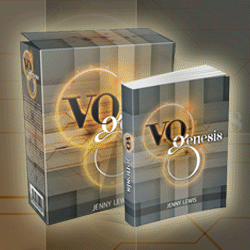How To Reduce Coal Dust Emission
By Brenda Panin
Power plants and factories that use coal as a fuel must also face the issues that coal dust brings with it. Over 1 billion tons of coal is produced annually in the US and the country’s 1400 coal-powered factories use over 900 million tons of these in a year. That’s a lot of coal, and as a result, a lot of coal dusts.
Studies on the impact of coal dust on issues like global warming and air pollution have been going on for years. There is yet to be a consensus on how harmful coal dust is to the environment. But in the interim, and to be on the safe side, coal-run factories and power
plants are wondering how to reduce coal dust emission.
Why Is There A Need for Reducing Coal Dust Emissions?
While the jury is still out on whether the coal dust released during bulk transport of coal is harming the environment, there are several reasons why factories must ensure that they transport and store this coal in an environmentally responsible manner.
This ‘fugitive dust’ as it is often called, permeates the factories and workers are constantly breathing in abrasive air. It may lead to health hazards if inhaled for too long. The coal is largely carried by freight, releasing dust along the way. Loading and unloading coal shipments may also create black swirls of dust caused by gusts of wind. While this dust may not significantly affect the standards of air quality in the area, it does create a nuisance for neighbouring industries, businesses and residential areas.
Coal dust can also increase the cost of handling and maintaining equipment. Workers are also at a risk from coal-dust explosions. As a result, most factories today are looking for hi-tech ways to keep coal dust emission at a minimum.
Ways to Reduce Coal Dust Emission
1. Water Treatments
Many plants use a high-powered fan that emits a spray of water over the surface of the coal in wagons. While this is an effective way of having the dust settle down, the effectiveness of water can be enhanced with the use of chemical veneers like binders, anti-oxidants and foaming agents.
2. Chemical Veneering Treatments
Veneering stations are a popular form of coal dust emission control at many coal shipping facilities and at load-out stations of coal mines. Chemical veneering involves sealing the coal with bio-degradable and eco-friendly binding polymers. When the surface of the stockpile is treated with these agents in water, the fine coal dust particles agglomerate together. This creates a protective crust over the coal that is usually of a thickness between 5 and 10mm. Such a layer is able to resist the impact of wind during transport. Veneering has been found to suppress dust emission by as much as 75%.
Coal sealants also have the added benefit of protecting large stockpiles from excessive moisture and deterioration from oxidation. Veneering can also help to reduce the use of water as a spraying agent, helping to conserve this valuable resource.
3. Enclosed Storage and Multi-Mode Transport
Besides reducing emission from shipments, many facilities choose enclosed storage areas for their stockpiles to limit coal dust nuisance to other factories, residences and businesses nearby. Monitoring product moisture and maintaining the moisture content of a shipment during transport and storage helps to keep dust in check. Implementing an enclosed infrastructure for loading and unloading the shipments at ports and at rail-outs also help to keep emissions low.
4. Staff Training and Monitoring Systems
It is important to train staff to be aware of the hazards of coal dust and the benefits of reducing it. Many facilities make sure their stockpiles are constantly cleaned. They also train employees with the latest, most improved loading techniques to reduce emission. Additional air quality monitoring systems on-site as well as at other coal terminals can help to find out dust emission rates. This will help to improve coal dust reducing techniques.
Keeping the factory environment and the air quality during transport of coal stockpiles may not turn the problem of global warming around. But it will make sure that people in the vicinity are not exposed to particulate matter that can be stressful. Workers in a coal-powered factory will also be safer and less likely to bring about workers comp lawsuits if they feel their health is not at a risk. Equipment will need less maintenance. The air quality of the area will not be significantly harmed and the facility will be seen as a responsible and green facility. While costs for dust reducing techniques differ, their benefits far outweigh the costs.
Photo Credit: Wikimedia Commons _______________________________________________________________________________________________________ Brenda Panin is a passionate blogger and a regular contributor to several blogs. In her free time she enjoys writing about health and environmental related topics. Useful information for this article has been kindly provided by Port of Brisbane. Brenda loves to see her readers getting useful information from her articles. _______________________________________________________________________________________________________













